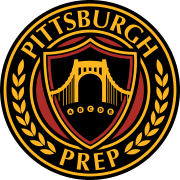3 Steps to Crafting an Authentic and Powerful Essay for your College Apps
With universities going test-optional, a record number of students applying to colleges, and the intensification of the admissions process, one thing we can say for certain: the essay is here to stay. If you’re reading this, chances are that you’re embarking on this seemingly daunting task, wondering how to craft an authentic and powerful college essay that will get you noticed among thousands of applications.
On average, college admissions officers in top-tier programs spend just a few minutes reading each essay. In this brief moment with the application that you spent months putting together, admissions officers are looking for mature, self-aware students who understand the world and society around them–those who will thrive as students, support their peers in a diverse atmosphere, and help fulfill the mission of the school.
Most students have what it takes to succeed in college–we know that you do–but it’s hard to showcase these qualities in an essay. That’s why we’ve broken the essay process down into three main steps, with the following exercises to help you create your best essay: Content, Narrative, and Editing.
Step 1: Content
Content is the raw material for building your essay. The better quality the content is, the better the essay will be. Quality content are meaningful events or series of events over time that have changed you and made you the individual you are today.
Exercise 1: deep reflection for generating content
Write down a list of your strongest memories. Memories are linked with emotions; therefore, the stronger the memories, the stronger the emotions. These are often linchpin moments that may have changed the way you see the world. No need to write these memories in detail. Start jogging your memory and write them down. By writing these down, you will be able to examine them more closely.
Here are some ideas to get you started:
- A teacher or an adult’s comment that inspired you
- A time when you helped a friend or fellow student
- The sight or smell of a particular classroom or lab
- A time you learned something significant on a field trip
- A scary moment in your life
- The death or illness of someone close to you
- An extremely nervous or anxious time
- The first time
- Performing
- Giving a speech
- Scoring a point
- Getting an A+ or bad grade
- Winning an award
- Losing a competition
Exercise 2: Self-biography (not auto-biography)
After completing the first exercise above, write about these events in the third person, and write about yourself as if you are a character in a book.
- Start with understanding your parents and family
- The setting of your birth
- The significant transitions moving homes and/or changing schools
- The friends you made
- The starting hobbies or activities
- Describe a day in your life during the school year
These two exercises should help develop some understanding of yourself like a character in a movie, TV show, fiction, or nonfiction book. This content is the raw material for your essays.
Step 2: Narrative

A narrative, in its simplest term, is a story. This story has you as the main character and the transformation you have gone through as a student. Rather than sharing a series of events, there needs to be a climax and resolution that demonstrates your growth.
Keep in mind that your essay has a specific audience: the Admissions Officer (AO). Simply and explicitly, AOs want to know what kind of student you are, not what kind of sibling, athlete, friend, or employee you may be. If your topic is not academically related, you MUST connect how that experience affects you as a student.
(And yeah, you can switch back to first-person now.)
Exercise 3: S.C.A.R.
Once you understand your audience and you have some raw material, you’re ready to structure an outline of the narrative using S.C.A.R.
S – Situation: The setting + circumstances
C – Challenges: External and/or internal difficulties
A – Action: Thought process and actions to overcome the challenge
R – Results: Tangible, quantifiable, or quantifiable outcomes
Here is a brief example outline of S.C.A.R.:
S – Last year, school auditorium, the first major debate
C – High level of competition and fear of public speaking
A – Prepared and practiced using specific exercises
R – Won or lost, lessons learned and applied to the academic setting, and those outcomes
It may be tempting to rush this stage, but it actually takes a lot of time and effort. Don’t worry about the word limit for now. It’s okay to write 2000 words at first–that’s why it’s a rough draft. Right now, just focus on generating exceptional content. We will rework it in the next step.
Tip for the first draft: Use small paragraphs to break your story into easily digestible and distinct parts– only one main concept per paragraph.
Step 3: Editing
“The only kind of writing is rewriting” - Hemingway.
Editing is the repetitive, critical process of improving your written work. Revision literally means “to see again.” You need to step back, read over the essay with fresh eyes, and find ways to strengthen the essay.
This entails adding, deleting, and restructuring your content, then refining the essay details for smooth and easy reading. It is also important to check for grammatical and spelling errors. Then rinse and repeat till perfect…or until your deadline.

Exercise 4: Break it up
After the first draft, take those smaller paragraphs and break them down even farther–separate every sentence into its own line. By separating each line, you can visually scan over to see where you have repeated the same concepts. You’ll also see how well your ideas flow.
Furthermore, a 650 word essay requires concision and precision. Condense main ideas and avoid being redundant. It may take several revisions and edits to meet the word count.
Tip for editing: read your essay out loud or use a text-to-voice app to elucidate any problems and issues in your writing.
Exercise 5: Solicit feedback
Once you feel like you have a strong draft, or at any stage in the process, get help from family, friends, and/or professionals or counselors.
Have them read over your essay and ask them pointed questions, such as:
- Does this answer the essay prompt?
- Is the main point clear?
- How is the tone? Do I sound likable?
- Does it read smoothly?
- Are there any inconsistencies?
- Are there any grammatical or spelling errors?
- Does it address who I am as a student?
Finally, and this is super important, have a thick skin and seriously consider their suggestions and feedback. The point of this essay is to create content that resonates with the reader. The reader is rarely, if ever, wrong. If they don’t like or understand some aspects of your written essay, then it’s on you to clarify the message.
With these steps and exercises as your guide, you’re now well on your way to composing an authentic and powerful essay that reflects the values and experiences that you’ll bring to your university.
As always, if you have more questions, need some help, or want some more direct guidance through the college application process, we’ve got you covered with comprehensive college counseling, essay help, one-on-one tutoring, and test prep services.

